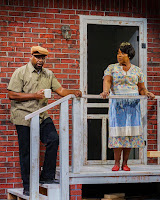Evergreen Crossings Retirement Community, South Windsor, CT
November 20, 2022
by Michael J. Moran
 |
| Gilles Vonsattel |
professor Gilles Vonsattel called his first appearance here since 2016 “an intense program” of music honoring “the legacy of Bach.”
Encouraging his audience to listen to the seven fugues and one canon he performed from Bach’s eighteen-movement “Art of the Fugue” as “elaborate conversations” among different voices, Vonsattel made these notoriously austere pieces more easily accessible. The clarity and precision of his playing heightened their resonance, from the fleet “Contrapunctus IX” (a double fugue) to the multi-layered “Canon All Ottava.”
Next came four selections from Shostakovich’s 1951 cycle of twenty-four preludes and fugues, inspired by Bach’s similarly structured “Well-Tempered Clavier.” Starting with the last in the series, which quotes “Art of the Fugue,” Vonsattel deepened his keyboard sound to capture its full emotional depth and dramatic power. He lightened his touch for the brighter fifth, sixth, and seventh of its predecessors, each also veering into characteristically darker moments.
This was followed with a virtuosic account of the 1841 “Variations Serieuses” by Mendelssohn, who led a nineteenth-century revival of interest in Bach’s music. Vonsattel sharply delineated each of the 17 variations on the opening theme while also shaping them into a unified whole.
After the first two preludes and fugues from Book I of Bach’s “Well-Tempered Clavier” – the first, in C Major, light and flowing; the second, in C Minor, brisk and urgent – Vonsattel moved without pause into Beethoven’s thirty-second and last (1822) piano sonata, also in the key of C Minor, which Vonsattel had illustrated with the famous opening of Beethoven’s fifth symphony and identified with a mood of turbulence in the composer’s music.
He played the stormy opening “Maestoso” movement with all the “vigor and passion” Beethoven calls for and the sublime closing “Arietta,” a simple, songlike theme and five wide-ranging variations, with rapturous concentration. This sonata’s pathbreaking two-movement format and forward-looking vision mirror the similar impact of Bach’s “Art of the Fugue.”
SWCA, a nonprofit, volunteer-supported organization, has sponsored this free concert series for over 39 years. The theatre of this suburban CT venue offers warm acoustics and plush seating. They’ll next present Ukrainian-American pianist Liana Paniyeva, who made a sensational Sevenars debut last summer, on January 29, 2023.





